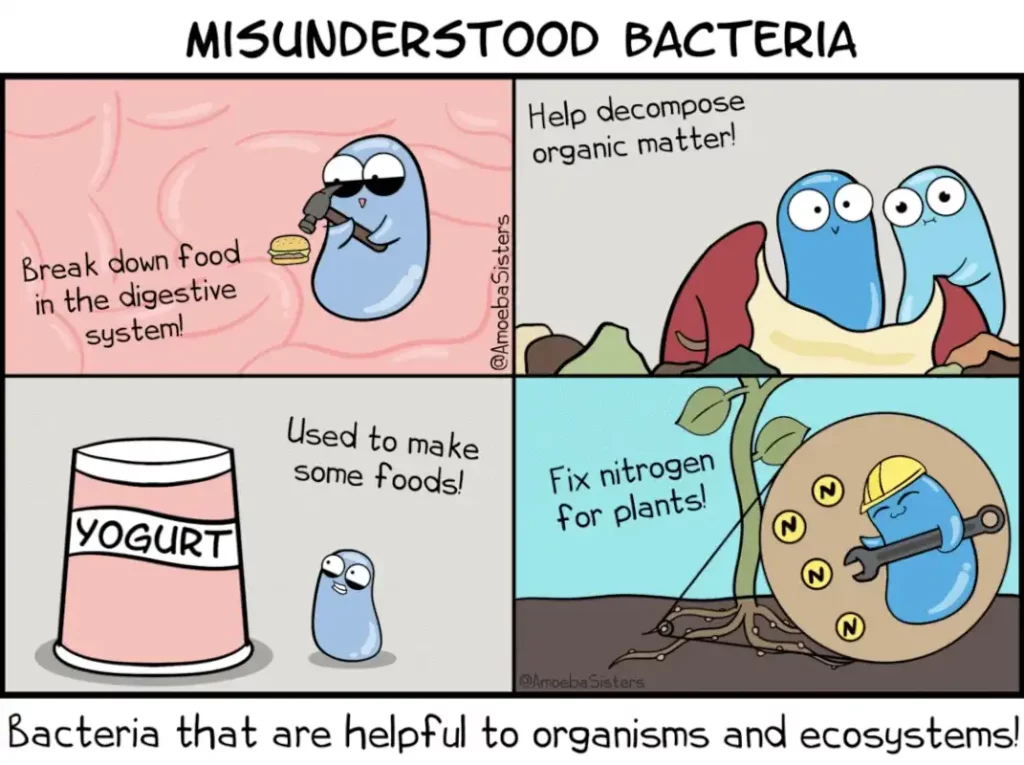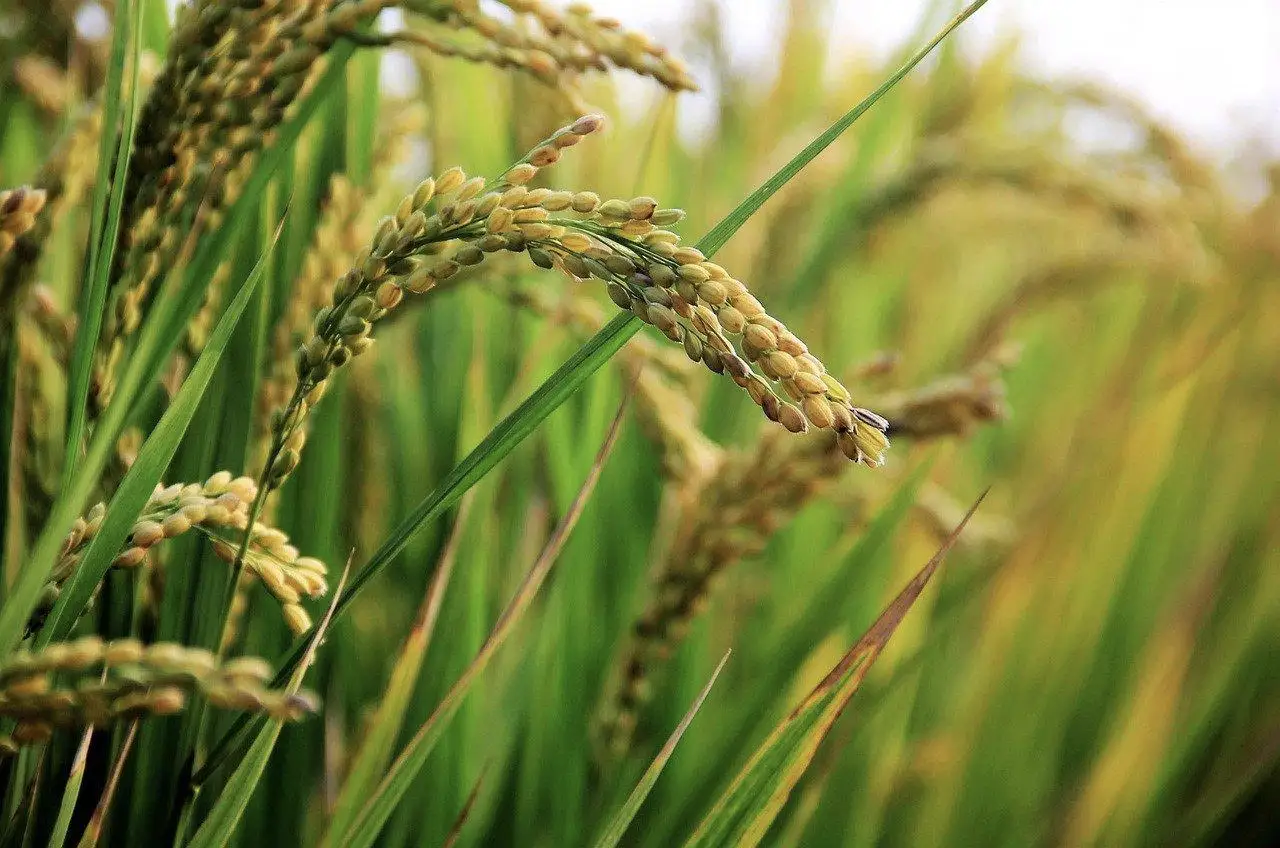Post written by Andrea Alcántara Enguídanos, Amina Ilyas, Tiago Machado and Chiara Longo during the SPS-CEPLAS Summer School 2024
Have you ever wished your garden plants had superpowers? Rice plants might just have one! Scientists discovered that microbes around rice roots help them absorb nitrogen, essential for growth, thanks to a special gene. This gene acts like a green thumb, attracting beneficial bacteria. This discovery could help farmers grow more rice cheaply while benefiting the. environment.

Illustration credits: The Amoeba Sisters (amoebasisters.com)
Microbial communities help rice plants grow with less fertilizer
Looking at the roots of two rice varieties (indica and japonica varieties), it was found that microbial communities that grow close to the roots of indica rice were more abundant in microbes related to nitrogen cycling in the soil. These microbes help the rice degrade organic matter in the soil, which makes more nitrogen available to the plants, helping them use organic fertilizer more efficiently.
Membership of microbial communities is determined by rice genetics
Excitingly, the scientists discovered that natural variation in a nitrogen transporter gene, called NRT1.1B, plays a big role in shaping the rice root microbial community. The NRT1.1B gene helps rice plants sense and use nitrogen from the soil, much like a grocery scanner checks out. It also signals the plant to make friendly signals to invite helpful bacteria. That way, this gene controls the friendship of rice and beneficial bacteria and makes them grow. better together.
Summary
Rice plants have a built-in system to ensure they get the nutrients they need with less effort, thanks to their own NRT1.1B gene and root microbial guests. This discovery could help farmers grow more resilient and healthy rice crops while also being more environmentally friendly. It’s like equipping rice plants with a natural booster that attracts the right microbial friends to thrive!
Image: Rice field image. Credit: Pixabay
Reference: Jingying Zhang et al, NRT1.1B is associated with root microbiota composition and nitrogen use in field-grown rice, Nature Biotechnology (2019). DOI: 10.1038/s41587-019-0104-4






